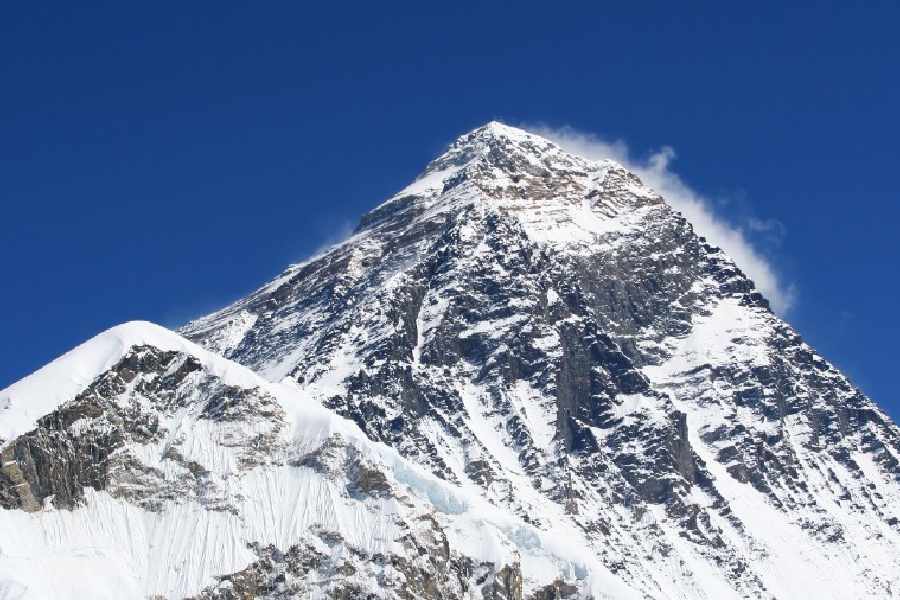The famous Sherpa village of Thame witnessed massive floods following a possible glacial lake outburst in the Everest region of Nepal on Friday devastating more than half of its homes, covering them with muck and debris.
However, so far there are no reports of any human causality.
Six people, mainly children and old-aged people, were rescued from the village by a team of army sent from a nearby barrack even as 15-odd huts were swept away by the massive flood in the Thame area of Solukhumbu, according to the Nepal Army.
“Fortunately, the incident occurred during the day. Had it happened at night, human casualties would likely have been unavoidable. Although no lives were lost, about 50 per cent of the village has been severely damaged, and the remaining houses are uninhabitable. It has been learnt that a school, a health clinic, seven houses and five hotels have been swept away by the disaster caused by the swollen Thame River,” The Himalayan Times newspaper reported.
Visuals of dusty brown muck and debris covering buildings halfway or houses washed away fully or in part flooded social media showcasing the horrors of the devastation wrought by the in-spate river.
The incident occurred at around 1.30 pm local time at Thame, which lies 16 km from Namche Bazaar, which serves as the entry to the Everest region.
Located at about 12,500 feet above sea level in the Khumbu Valley, the Thame village is famous as the birthplace of legendary Sherpa Tenzing Norgay, who along with New Zealand’s Edmund Hillary was the first to summit Mount Everest, the highest in the world, in May 1953.
It is also home to famous record-breaking Everest climbers including Apa Sherpa, Kami Rita Sherpa, and Lakpa Rita Sherpa, among others.
However, due to the off-season for tourism, there were very few people in the village, and they managed to flee to higher ground.
“It cannot be said for sure whether it was an avalanche or glacial lake outburst,” Nepal Army spokesperson said.
The second team for rescue has been dispatched from the district headquarters for additional support. However, so far there are no reports of any human causality, the army added.
The Ministry of Home Affairs, in coordination with the Defence Ministry, has directed the Nepal Army, Armed Police Force, and Nepal Police for search, rescue, and disaster management operations, The Kathmandu Post said.
The damage was caused by a flooded Thame rivulet, one of the tributaries of Dudhkoshi River.
Authorities have warned residents downstream of a flash flood.
The Himalayan Times newspaper quoted Mingma Sherpa of Thamechho Kydug from Thame as saying: “Lakes beneath Thengbo Glacier witnessed major outbursts this afternoon, causing a massive flood and landslide. More than half of Thame village has been affected.” The outburst flood from Thengbo Lake near Tashi Lapcha Pass hit the village.
However, the Kathmandu Post quoted Chief District Officer Devi Pandey, who said, “Although there are rumours of a glacial lake outburst, it has not yet been confirmed.” She added that it is raining in the affected area, which could be the cause of the flood. She said the full extent of the damage is still being assessed.
“Homes of the Thame hamlet of Nepal's legendary mountaineers have been swept by flood and landslide possibly owing to glacial melt. As of now, no human loss is reported in this Everest region of East Nepal,” Birat Aanupam, a travel writer, posted on X.
Glacial lake outburst floods, or GLOF, is a sudden release of water from a lake fed by glacier melt that has formed at the side, in front, within, beneath, or on the surface of a glacier, according to the International Centre for Integrated Mountain Development (ICIMOD), a regional intergovernmental organisation representing the eight Himalayan nations.
Experts have warned that global warming poses major threats to glacial lakes and subsequent GLOFs in the Hindu Kush Himalayan Region.
Except for the headline, this story has not been edited by The Telegraph Online staff and has been published from a syndicated feed.










